Common Causes of Vertigo and Imbalance:
Benign Paroxysmal Positional Vertigo (BPPV)
BPPV is the most common cause of vertigo and imbalance in the community. It is caused by detached tiny calcium carbonate particles (called otoconia) from the utricle entering one of the balance canals, usually the posterior canal. It usually occurs in adults over the age of 50 and is more common in women. In younger individuals if often follows even quite trivial head trauma. There is a wide spectrum of severity ranging from inconsistent positional vertigo to continuous vertigo provoked by any head movement. BPPV symptoms often resolve spontaneously but can last for days, weeks, months or years. Every individual presenting with dizziness or vertigo should undergo a Dix-Hallpike provocative positional test.
Diagnosis: Dix-Hallpike Provocative Positional Test.
The subject is lain back (shoulders on a pillow) to one side. After a brief delay the subject experiences vertigo and has a sudden onset of torsional beating of the eyes (nystagmus) beating towards the undermost ear. The vertigo and nystagmus fade by 20 seconds.
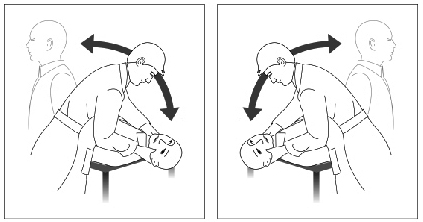
Treatment: Epley Canalith Repositioning Procedure (CRP)
The modified Epley CRP is the most commonly used repositioning treatment with four stages, a minute apart. The purpose is to turn the posterior canal around to allow the otoconia to escape. The examiner stands or sits behind the subject.
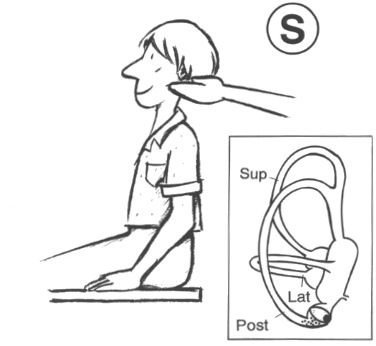
1. The subject is lain back into the original Dix-Hallpike test position (the vertigo and nystagmus recur).
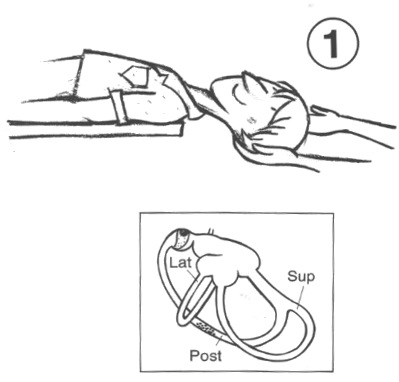
2. Over a minute the head is turned 45 degrees to the opposite side.
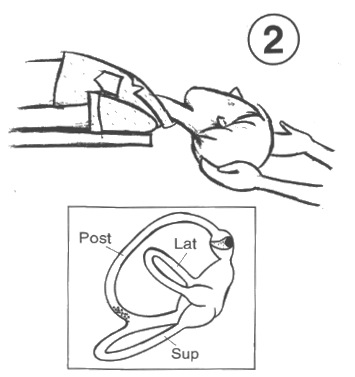
3.The subject is asked (or assisted) to turn onto the side and look down at the floor.
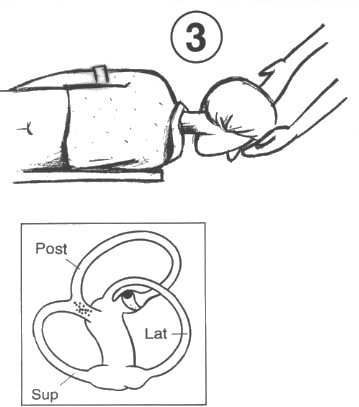
4. The subject is asked (or assisted) to sit up with the head inclined to the symptomatic ear.
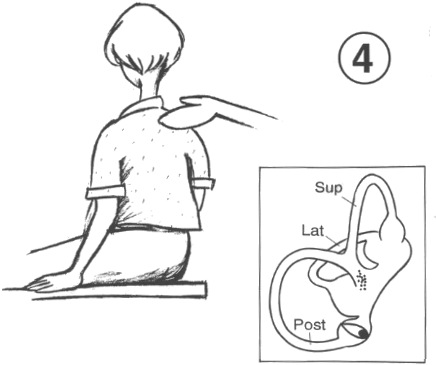
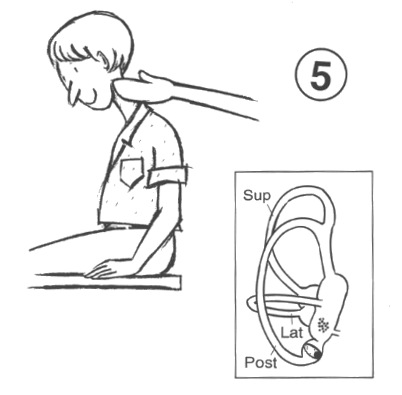
The Dix-Hallpike test is repeated. The absence of vertigo and nystagmus is favourable sign but not proof of success. Young subjects can be instructed to test themselves at home by lying back over the cushion on the floor. Older subjects should be seen back for testing. The first treatment is successful in 70%. Approximately 95% are asymptomatic after three treatments. If symptoms persist the Semont manoeuvre is an alternative treatment (see further reading below). Many individuals experience recurrences in the same or opposite ear.
- Assoc. Prof. Cynthia Darlington
Further reading:
Hornibrook, J. (2011). Benign Paroxysmal Positional Vertigo (BPPV): History, Pathophysiology, Office Treatment and Future Directions. International Journal of Otolaryngology, vol. 2011, Article ID 835671, 13 pages, 2011. doi:10.1155/2011/835671